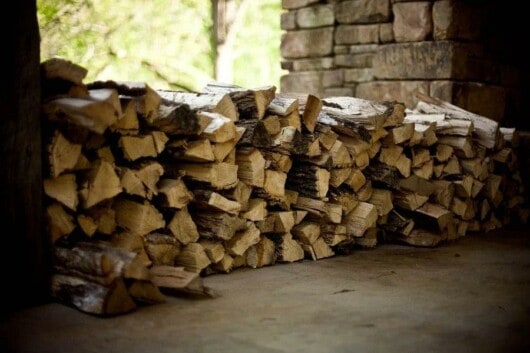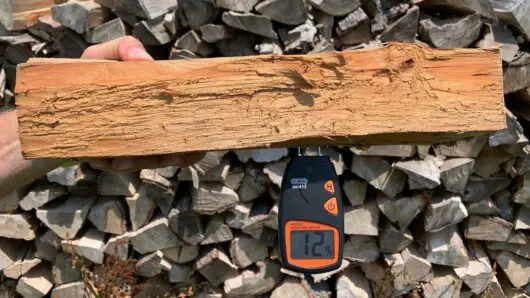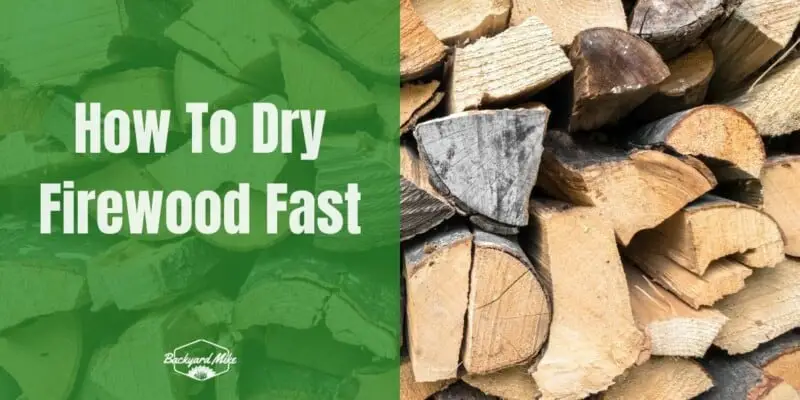Do you also hate having to wait for the firewood to dry? I know the pain, even I used to feel that way. However, you can dry firewood superfast as long as you know the right process and a few secret tips.
Drying firewood fast is very easy. In this article, you’ll get to know all about how to dry firewood fast and a few drying hacks as well. Further, you will also get to know other key details like how long it takes for firewood to dry, how to air the firewood, and a lot more.
How long does it take for firewood to dry?
Depending on how cold the weather is, you may find yourself looking for some relief from fire in the fireplace. For such situations, it is essential to take note of how long it generally takes for firewood to dry. This will help you decide how much to wait for firewood to dry or to find alternatives for warmth.
Technically, firewood requires around 9-12 weeks to dry out properly. While this might sound slightly discouraging, this will make it more important for you to prepare the firewood in advance. You can simply start preparations as soon as the winters begin so that you have ample firewood. Further, you can start gathering firewood at the end of the season if you want to store it for future use. This is assuming you’re looking for the best firewood possible, the one that is completely dried out.
You should keep in mind that certain types of wood will dry out considerably faster than other types of wood. The cuts of the wood will also make a difference. Further, it is one of the reasons why firewood logs are smaller are compared to traditional logs. If you want your firewood to dry fast, you must research the type of wood you’re using for firewood. This will help you get a better idea of how long your firewood will take to dry.
How to air out firewood properly?
Drying firewood depends on the space you have at your disposal and how quickly you need firewood to dry. Depending on these two factors, you can consider which method to use to allow more air and sunlight to reach firewood. While this will not be as efficient when it comes to space, it will be better at drying out firewood.
Firstly, you should set up as much space as possible for firewood. You shouldn’t let the wood touch the ground. To do that, look for some sort of elevated platform that will allow air to flow underneath, through the wood. From there on, you’ll want to place the logs of firewood that you want to dry out. Remember to leave some space between each log for better airflow. You can also choose to stack them to an extent but keep in mind that maximizing the airflow is important. The more you’re stacking the wood, the more it will hamper how much air is going to the logs.

You should then leave firewood uncovered for as much time as possible. Whenever it is sunny, windy, cloudy, or any other weather that doesn’t involve precipitation, you should leave the logs uncovered. This way, the logs will get as much sunlight as possible during the day and airflow during the night. When it is raining or snowing, you need to consider your options when it comes to keeping firewood covered. Some people prefer covering all of the wood with a clear plastic sheet. This way, the wood can receive sunlight while keeping any water out.
While plastic will do a great job at not letting any water come in contact, sometimes it does too good of a job. If the water in the wood starts condensing, it’ll drip down from the plastic and back into the logs. This will start a cycle that you don’t really want. Instead, you need to try and find a material called tarpaper. It’ll be strong enough to keep snow and rain from contacting the logs, while also allowing the air to circulate. Regardless of the material, you’re using on sunny days, remember to uncover the logs during rainy days.
Drying hacks that will help you dry firewood fast
1. Make your firewood the right length
Cut firewood logs in lengths that fit best within the fire you intend to burn them in. Ideally, the wood will consume the majority of the length. This means you should be efficient without much space at either end, while not requiring to be wedged in or left at awkward angles.
Get it right the first time and cut it properly so that you don’t need to re-cut the logs before using. You can easily make a mark on the bar of the chainsaw. This will remind you how long the wood needs to be when you’re cutting it into rings.
2. Stack firewood in an elevated platform
Wood that is left on grass or dirt will likely struggle to dry. Place the firewood pile on concrete or on gravel or on any raised platform. The elevated platform will allow the air to circulate underneath the pile, too.
3. Leave a lot of air gaps
When you’re stacking firewood, ensure that there is a lot of space for the air to flow. The air should be able to flow in and around each log of wood. Tightly stacked piles of wood might look pretty, but they’ll be less efficient at seasoning firewood. If possible, make the sides of the woodshed slatted or half-open as it will allow air through.
4. Let in the sunlight
Allow sunlight and wood to reach the wooden pile. The more sides of the wood the sunlight reaches, the faster your firewood seasons. You can leave the fresh firewood in the sunny, breezy conditions in a wooden stack for some time. After that, you can stack them up to speed along the process. Stacking firewood in a covered, closed wooden shed will increase the drying time by several months.
5. Leave firewood out in the summers
Believe it or not, summer rain might actually help firewood to season quicker. The summer rain will flush out any sap that is keeping the wood green. Leave the wooden pile uncovered for the Summer and move it under the covers during the Autumn/Fall. The latter will allow the remaining moisture to dry before the winters kick in.
6. Split the wood precisely
Wood that is split along the grain dries up 15x faster than wood surrounded with bark. The more split surfaces, the faster firewood will dry. Unsplit wood will stay green and slightly wet even in perfectly dry conditions for an entire summer.
Try to split firewood logs into smaller pieces. Wood that is 4-inches in diameter (across the end measurement) will burn efficiently, so aim for it if possible.
7. Keep small firewood stacks
Short, narrow firewood piles will dry considerably faster as compared to thick, solid stacks of firewood. Stack firewood in a single row off the ground so that the sun and wind draw out the moisture easily.
8. Cover up the wood
Stacking unseasoned wood out in the sunlight and wind will help it dry out faster. However, you’ll need a lid or cloth to keep the rain away if you wish the wood to continually dry. You shouldn’t wrap your pile in waterproofing, as covering the stock in a tarp could double the time for drying.
If it is a short rain shower, throw on a tarpaulin. However, if it rains heavily and it does so frequently, add boards or pallets over the top of the wood. This will allow for better airflow while also minimizing condensation.
9. Don’t leave it too late to season firewood
Ideally, you would want to harvest or season firewood for the next winter’s this spring or early summers. Autumn/Fall will be too late to complete the drying, as the air will be too humid to be seasoned properly. You shouldn’t underestimate the amount of time the drying process normally takes. Even drying firewood in a covered shed in Autumn/Fall will be unlikely to result in less than 30% moisture content.

10. Stack firewood away from walls
Firewood that is stacked outdoors and away from the walls, trees, or buildings will dry the fastest. If you leave firewood out for the summer, then simply stack it away in the woodshed once it is seasoned. This will be the best of both worlds.
What types of firewood will dry the fastest?
Soft firewood will dry considerably faster than most hardwoods. However, they’ll also burn much quicker and at a lower temperature. With that in mind, it would be best to try and get a mix of both soft and hardwood. Then, you should season the wood properly and burn it in your wood fire. Making use of a moisture meter will help you keep a check on the moisture content of your firewood logs. Woods like willow or pine will dry the fastest. However, you’ll require a lot of them for keeping you warm over a long winter.
Conclusion
Thank you for reading. Hopefully, now you know all about how to dry firewood fast and the type of wood that dries fast. There are many tips and hacks that you can use for drying down the firewood stack. It is important that you give firewood enough time to season and dry out before using them in winters. Further, you can also keep the wood seasoned and stored and then use the wood later on. If the wood is kept damp, it will start rotting instead of drying. Not to mention, woodlice and other bugs will start to eat it if you leave the wood on the ground.


